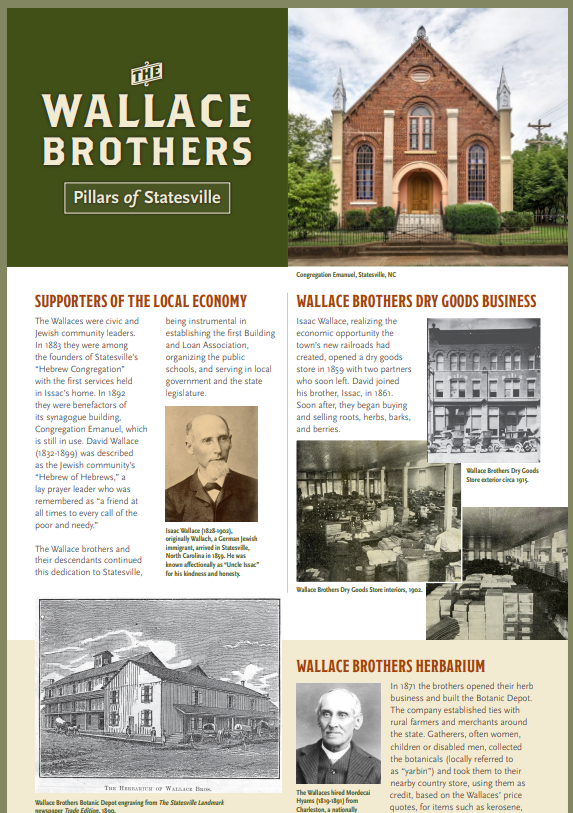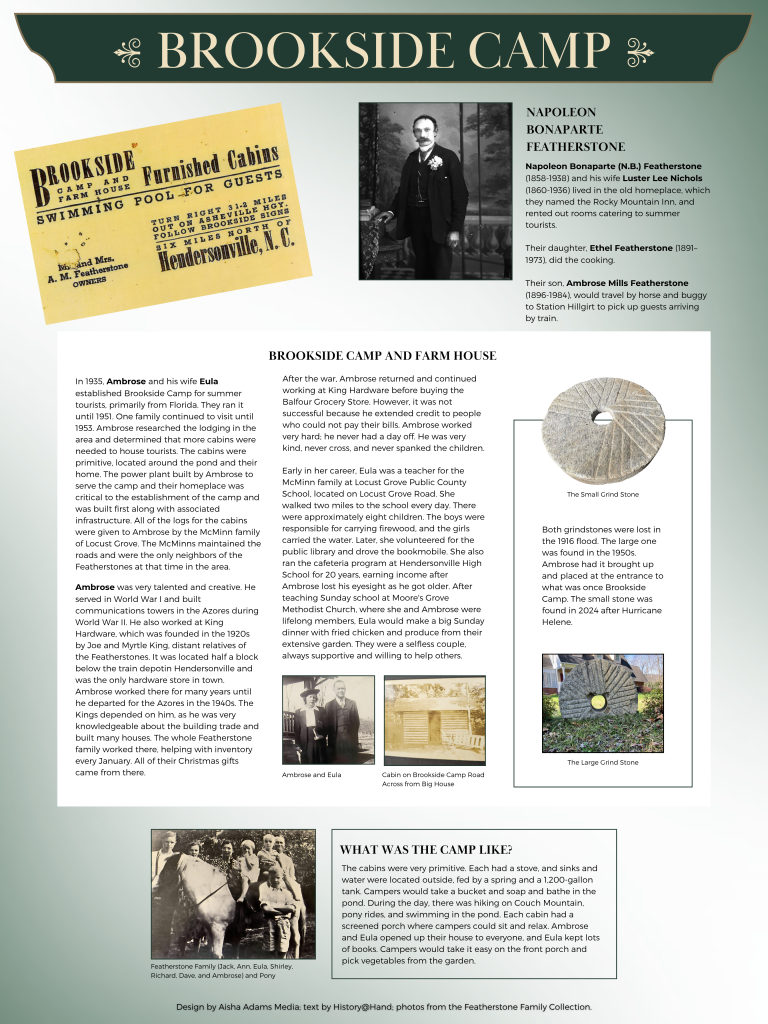
Past Lives in Public Places
History@Hand has developed more than 40 interpretive panels highlighting the people and stories that shaped Asheville. Some panels are available virtually on this website, while others can be visited in locations throughout the city — from downtown streets and bus shelters to university buildings and museums.
Where to Find Panels in Asheville
The Coleman Zageir Panel
- On Patton Avenue near South Lexington
- On Zageir Hall at UNC Asheville
The Lipinsky Panel
- Inside Lipinsky Auditorium at UNC Asheville
The Montford Historic District Panels
- Located on bus shelters along Montford Avenue
The Blomberg Panels
- Asheville Community Theatre (Blomberg Annex)
- Estes-Winn Antique Car Museum at Grovewood Village
The Weaverville Panels
- At the Dry Ridge Museum, Weaverville, NC
The Osher Life Long Learning Institute Panels
- Inside the OLLI building at UNC Asheville
Explore Panels by Topic
Use the links below to view virtual versions of the panel collections:

The Family Stores
Discover the stories of Asheville’s Jewish-owned businesses from 1880 to 1990. This panel series documents over 450 retail locations and highlights the families who helped shape downtown Asheville’s economy and culture.
Learn more about the full project on the About page.

UNC Asheville Campus Buildings
This panel series highlights the namesakes of UNC Asheville’s campus buildings — telling the stories of individuals whose lives and legacies helped shape the university and the Asheville community. Installed across campus, these panels offer a deeper understanding of the people behind the names.

Osher Lifelong Learning Institute
This panel series explores the origins and leadership behind OLLI at UNC Asheville, a center nationally recognized for promoting adult learning and community engagement. Learn about the Reuter family, Bernard Osher’s philanthropic impact, and the vision of founding director Ronald Manheimer.

Montford Historic District
Mounted along Montford Avenue bus shelters, this self-guided panel series traces the layered history of one of Asheville’s oldest neighborhoods. Learn about Montford’s architecture, prominent residents, and the Stumptown community that once thrived here before urban renewal reshaped the landscape.

Black History
These panels honor Asheville’s Black community through the lens of education, resilience, and cultural leadership. Learn about the South Asheville Colored School, the legacy of Stephens-Lee High School, and the powerful individuals and institutions that shaped — and continue to shape — the city’s story.

Wilma Dykeman
Explore the life and legacy of Wilma Dykeman — a pioneering voice in Appalachian literature, environmental advocacy, and civil rights. Through three panels, discover how her words and values helped shape Western North Carolina and inspired generations of readers, writers, and activists.

Harry Blomberg
This panel tells the story of Harry Blomberg — Asheville’s longest-running auto dealer and a driving force behind Grovewood Village. A World War II veteran, entrepreneur, and preservationist, Blomberg left a lasting mark on Asheville through his business success, civic spirit, and support for local culture.

Weaverville
These panels trace Weaverville’s early growth through its industries, institutions, and infrastructure. Explore a timeline of the town’s key events alongside stories of the mills and tradespeople who built community along Reems Creek in the 19th and early 20th centuries.

The Jewish Community
This series of panels explores the institutions that have supported Jewish life in Asheville for more than a century. Learn about the founding of the JCC, the growth of Congregation Beth Israel, and the role of the Center for Jewish Studies at UNC Asheville in preserving heritage, expanding education, and building community.

Asheville Community Theatre
These panels celebrate Asheville’s long-running community theatre — founded in 1946 and still thriving today. Learn about its early years, inclusive mission, and the Blomberg family’s role in expanding the space that continues to support local talent and creative expression.

The Wallace Brothers
This panel tells the story of Wallace Brothers — a downtown department store opened in 1919 that became known for quality merchandise, inclusive service, and deep ties to Asheville’s Black and Jewish communities. It highlights the Wallace family’s civic contributions and multigenerational legacy.

Featherstone Panels
These panels tell the story of the Featherstone family’s enduring presence in Henderson County, beginning with early settler Merrimon Featherstone in the late 1700s. They explore a legacy shaped by farming, milling, hospitality, and land stewardship across generations, including the creation of Brookside Camp.

